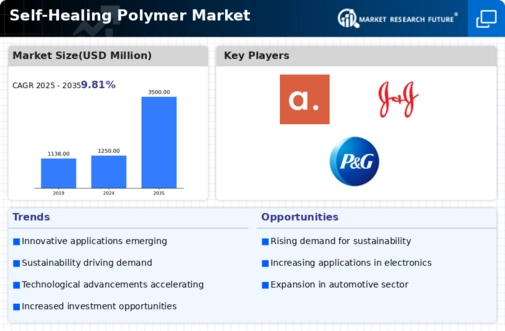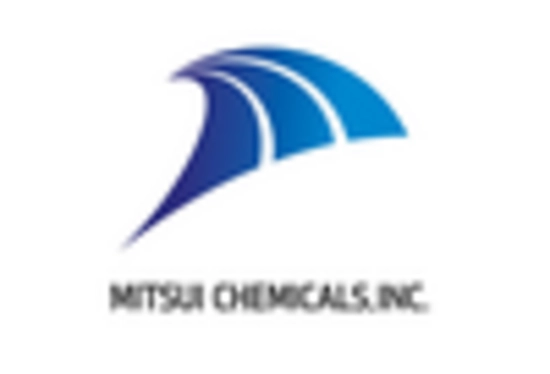Rising Demand in Electronics
The Self-Healing Polymer Market is experiencing a notable surge in demand from the electronics sector. As devices become increasingly sophisticated, the need for materials that can withstand wear and tear while maintaining functionality is paramount. Self-healing polymers offer a unique solution, allowing electronic components to recover from minor damages autonomously. This capability is particularly appealing in consumer electronics, where product longevity is a key selling point. Market data indicates that the electronics segment is projected to account for a significant share of the self-healing polymer market, potentially reaching a valuation of several billion dollars by 2026. This trend suggests that manufacturers are prioritizing the integration of self-healing materials to enhance product durability and consumer satisfaction.
Growth in Construction Applications
The Self-Healing Polymer Market is witnessing increased interest from the construction sector, where the durability of materials is critical. Self-healing polymers are being explored for use in concrete and coatings, providing solutions that can autonomously repair cracks and damages. This innovation not only extends the lifespan of structures but also reduces maintenance costs significantly. Recent studies indicate that the construction industry could see a substantial adoption of self-healing technologies, with estimates suggesting that the market for these applications may grow at a compound annual growth rate of over 20% in the coming years. This growth reflects a broader trend towards sustainable building practices and the desire for materials that enhance structural integrity.
Innovations in Healthcare Materials
The Self-Healing Polymer Market is also making strides in the healthcare sector, where biocompatible self-healing materials are being developed for various applications. These materials can be utilized in wound healing, drug delivery systems, and even in prosthetics, where the ability to self-repair can significantly improve patient outcomes. The healthcare industry is increasingly recognizing the potential of self-healing polymers to enhance the functionality and longevity of medical devices. Market analysis suggests that the healthcare segment could represent a growing portion of the self-healing polymer market, with investments in research and development likely to drive innovation and adoption in this field.
Technological Advancements in Manufacturing
The Self-Healing Polymer Market is benefiting from technological advancements in manufacturing processes. Innovations such as 3D printing and advanced polymerization techniques are enabling the production of self-healing materials with enhanced properties and functionalities. These advancements are likely to lower production costs and improve the scalability of self-healing polymers, making them more accessible to various industries. As manufacturing technologies continue to evolve, the potential for widespread adoption of self-healing polymers increases. Market forecasts indicate that the integration of these advanced manufacturing techniques could lead to a significant uptick in the self-healing polymer market, as industries seek to leverage the benefits of these innovative materials.
Environmental Regulations and Sustainability
The Self-Healing Polymer Market is being influenced by stringent environmental regulations and a growing emphasis on sustainability. As industries seek to minimize their ecological footprint, self-healing polymers present an attractive alternative to traditional materials that may require frequent replacement. These polymers not only reduce waste but also contribute to energy savings by prolonging the life of products. The market is witnessing a shift towards eco-friendly materials, with self-healing polymers being positioned as a viable solution. Data suggests that the demand for sustainable materials is expected to rise, potentially leading to a significant increase in the market share of self-healing polymers in various applications, including packaging and automotive.


















Leave a Comment